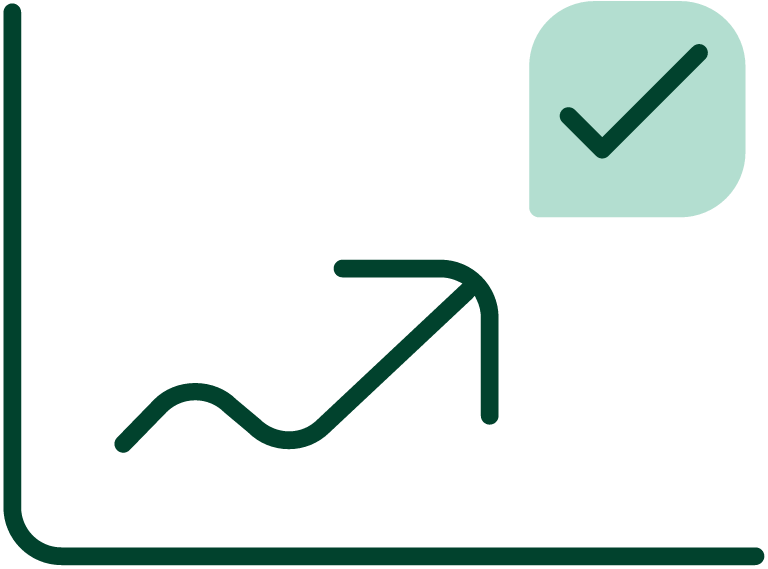The role of the CFO is changing as the financial industry undergoes a rapid transformation. By 2025, Gartner predicts that more than 80% of new job opportunities in finance will be in roles other than traditional accounting and financial planning and analysis (FP&A). With the assistance of autonomous technology, companies that want to be prepared for the future are welcoming this as a new opportunity for their financial departments to promote greater efficiency and an enhanced customer experience, both of which are foundations for business growth.
In this article, we explore the advantages of autonomous finance, especially as it relates to accounts receivable, and at what point your company should consider employing them, so you can decide if it’s a worthwhile investment for your business.
What is Autonomous Finance?
Autonomous finance is the use of machine learning (ML), artificial intelligence (AI), robotic process automation (RPA), advanced analytics and other advanced technologies to automate the financial processes of organizations as much as possible. Gartner reports that 64% of CFOs surveyed expect their finance department to be fully automated in the next few years, which includes not only automating accounting and financial processes but also automating analytics as well as real-time and predictive insights.
Automation, however, doesn’t mean that all aspects of finance run by themselves. Instead, it relies on a machine for repetitive work that is prone to human error, leaving other tasks such as dispute resolution for humans to resolve. For example, a human would need to contact the customer to understand the source of the dispute and work together with the customer to resolve it. Even with automated systems, humans and multiple humans are needed to manage the system.
What are the Benefits of Autonomous Finance in A/R Collections?
The goal of autonomous finance is to improve accuracy and speed, reduce the potential for error and ultimately, to deliver a better customer experience based on a better understanding – and even the ability to predict – customer behavior. Since effective financial processes already impact a company’s bottom line, autonomous finance allows businesses to drive this impact even further.
Benefits of autonomous finance include:
- Greater efficiency and productivity. Automating manual tasks such as A/R invoice collections and account reconciliation eliminates these tasks that are prone to human error. As a result, businesses can increase productivity in their A/R collections teams without hiring additional staff.
- Enhancement of the customer experience. Tasks such as dunning workflows can be automated, customizing and escalating the A/R collections process as needed according to the type of customers and their payment history. Customers who receive these personalized dunning workflows feel understood and motivated to pay on time.
- The ability to offer a competitive advantage. If your business can automate these processes and gain better visibility in order to accurately forecast customer payments before their competitors, you may be able to beat out competitors. If your financial executives can do this while also eliminating manual and tedious tasks, those team members will be able to also focus more on innovation and business development.
- Transform the A/R team into a revenue-generating center. By concentrating on reducing expenses, increasing the productivity of your A/R team and the profitability of the company and accurately forecasting growth, the A/R team can become a strategic player in your company’s growth.
When Should You Prioritize Autonomous Finance in your Company?
As businesses grow, many financial departments start to realize that what was working when the company was in their startup or medium-size growth phase is no longer feasible as the company scales. For example, using spreadsheets to track A/R invoice collections and having details of a customer’s payment and credit history in different places become burdensome as your business needs to increase productivity and make these processes more efficient. These are the main signs that your business may need to consider automating its A/R collections.
Here are a few additional signs:
- You have continuously overdue invoices. Especially for larger companies with thousands of invoices sent to customers each month, an automated process for ensuring customers pay on time can save the company tens of thousands of dollars in interest each month.
- Your business requires a streamlined process. Companies with hundreds of different customers in multiple industries and geographic regions must have a repeatable process they can apply and easily customize as they grow and scale their business.
- You need to replace manual processes with automated ones. For example, automated A/R invoice collections can eliminate the need to hire additional collections staff, freeing up a business’ time and resources and managerial staff for other tasks.
- Your financial staff has rates of high turnover. When traditional credit management and cash application is automated, it reduces the need for staff and makes the credit management and customer payment process more efficient.
- You want to simplify a complex process that involves multiple stakeholders. Many financial processes such as bank and credit card reconciliation include multiple stakeholders, and when a person is on vacation or leaves the company, the process is stuck.
- You need key metrics and payment forecasting in real-time. The ability to track and send reports related to Days Sales Outstanding (DSO), net accounts receivable, A/R turnover ratio, and other important metrics help you gain insights into the financial stability of a company. The ability to aggregate data from multiple sources helps your business see important customer trends and Days Sales Outstanding (DSO) in real time. Armed with this real-time information, your finance team can decide how it should tailor its approach to A/R invoice collections.
How to Automate the Financial Processes
According to McKinsey, almost half (45%) of professional tasks could be automated with the right technologies. In order to accomplish this, however, businesses will need to decide on their specific goals and select technology that supports these goals. For example, if they want to eliminate traditional financial tasks that are manual and tedious, they might consider an automated A/R invoice collections platform or an automated account or bank reconciliation tool.
On the other hand, If they want to ensure that all of their data is in one place to get insights in real-time, they will need to ensure that these tools integrate with other financial software the company uses. Since it can be challenging to persuade employees to move from manual to automated processes that are new and unfamiliar, businesses must focus on benefits both employees and the company will gain, such as more time spent on business development and time saved on tedious tasks.
Automated A/R Invoice Collections Helps Drive Autonomous Finance
As financial transformation is expected to be a reality within the next six years, finance departments will need to make necessary technological investments to achieve this goal.
Gaviti’s automated A/R collections platform, with its streamlined and standardized dunning workflows, real-time performance metrics and payment forecasting, accelerates team productivity without the need to hire additional staff. Its credit application management module automates the entire credit management process, mitigating the risk of bad debt while also reducing the need for administration costs. Its cash application enables automated payment matching that precisely allocates payments to invoices and achieves accuracy levels of 100%.
Gavit’s platform also integrates with any Enterprise Resource Planner (ERP) – and multiple ERPs, to aggregate data in a single point. All of its modules work together to mitigate late customer payments, improve financial accuracy and accelerate your cash flow.
Want to learn more about how your business’ financial team can automate its A/R invoice collections process? Speak to a Specialist today to see how it works.


















